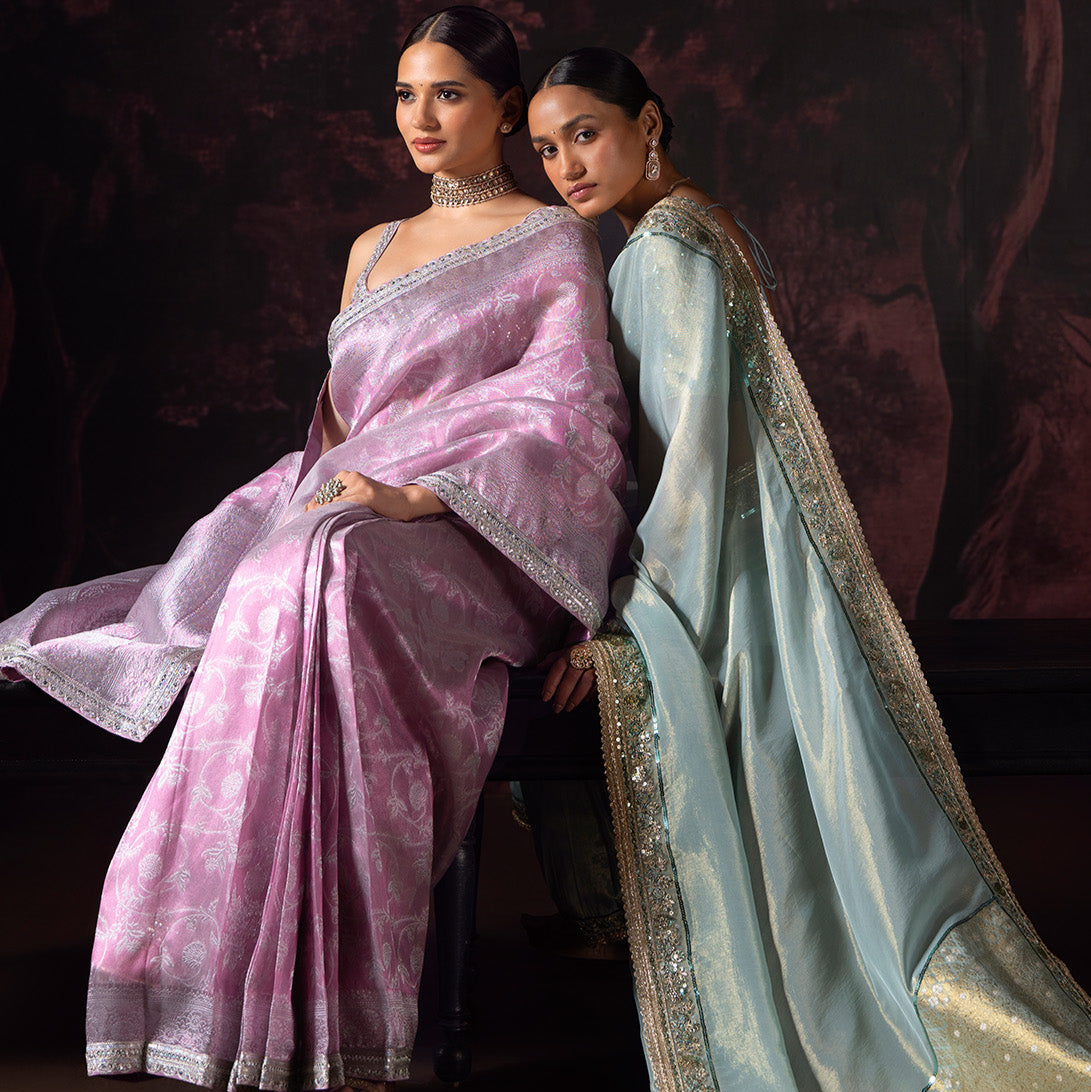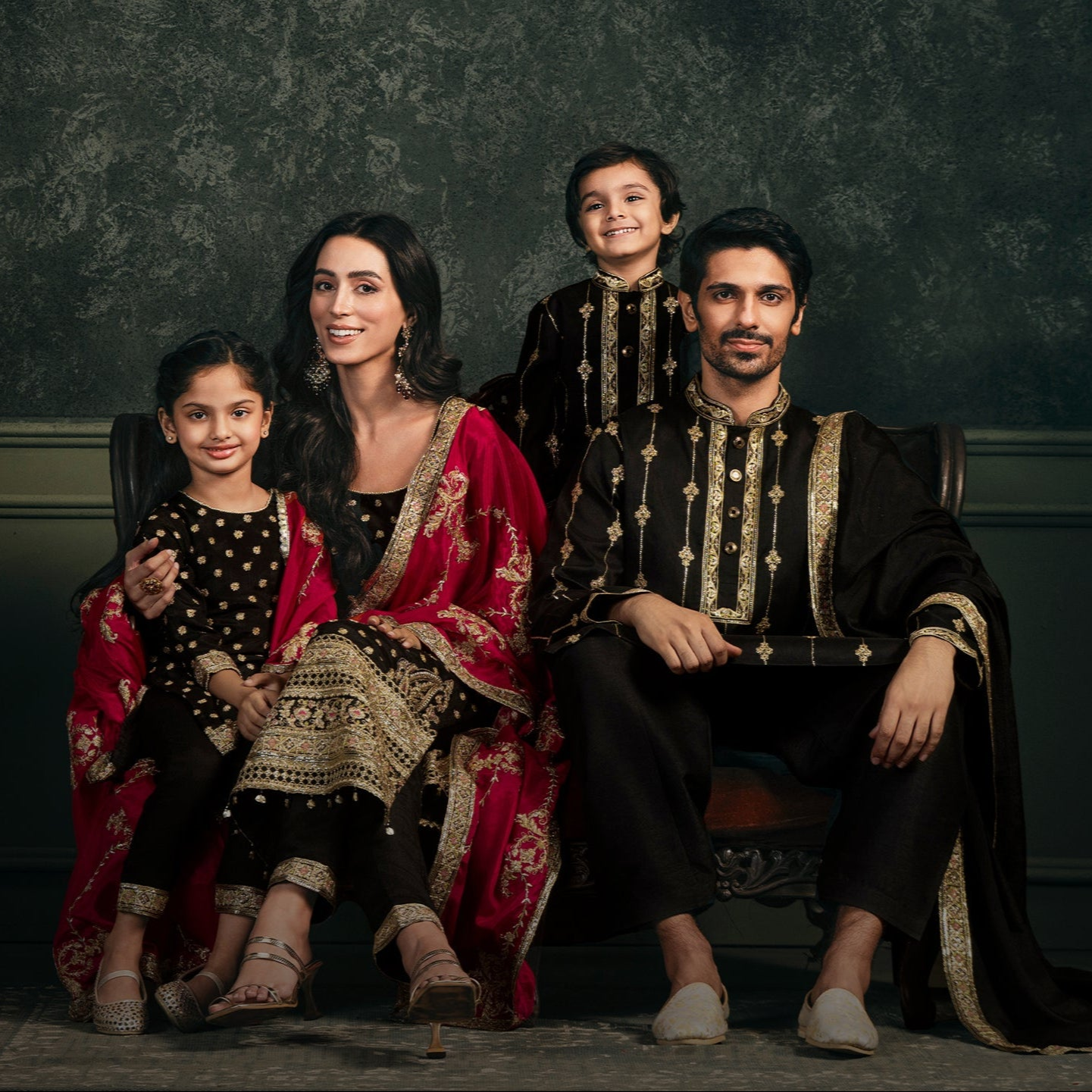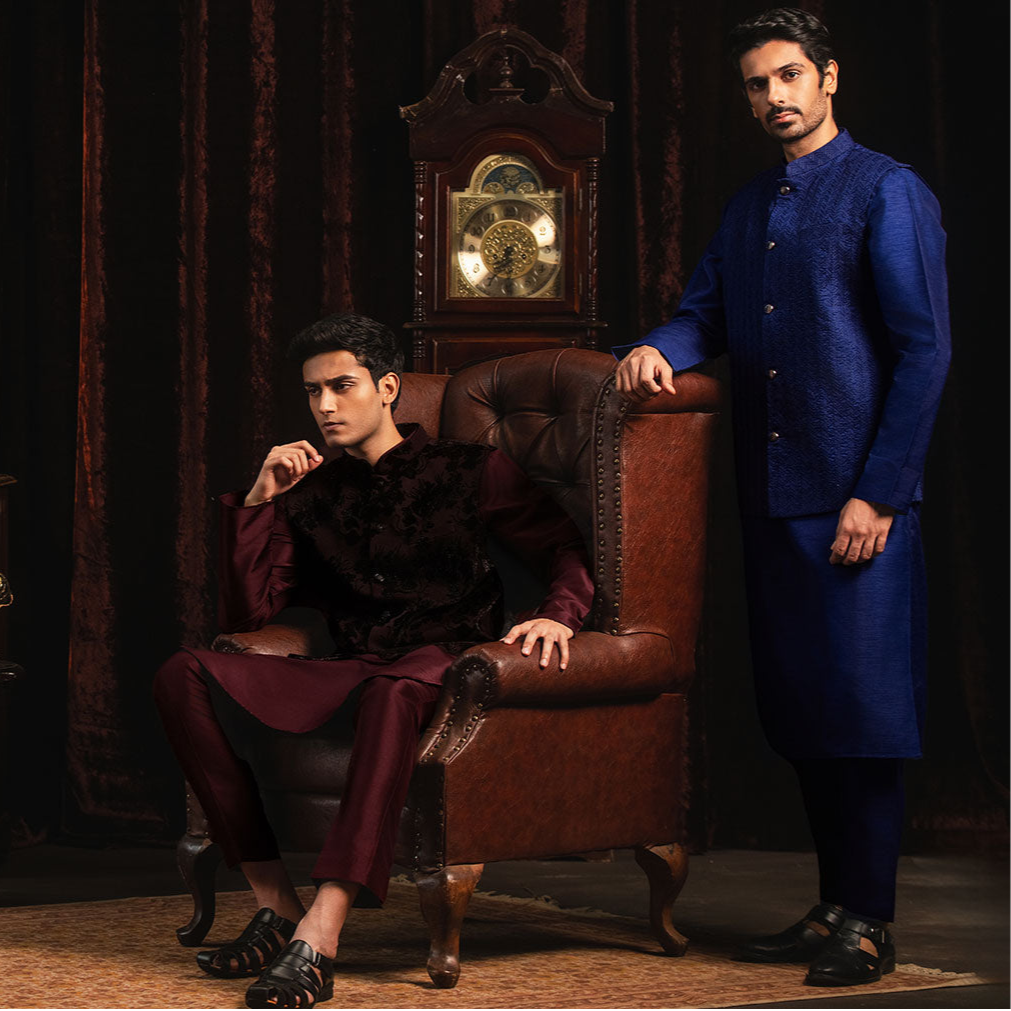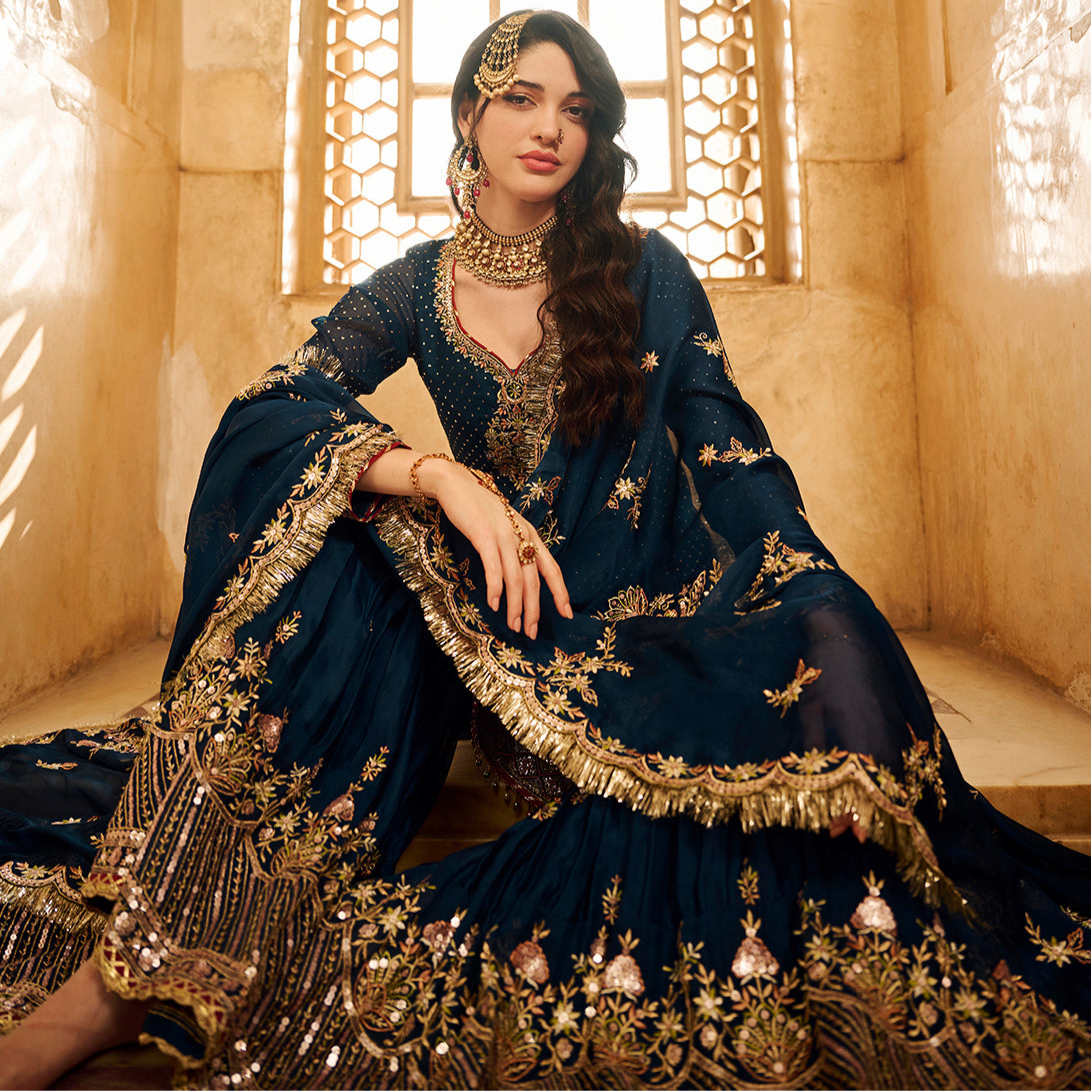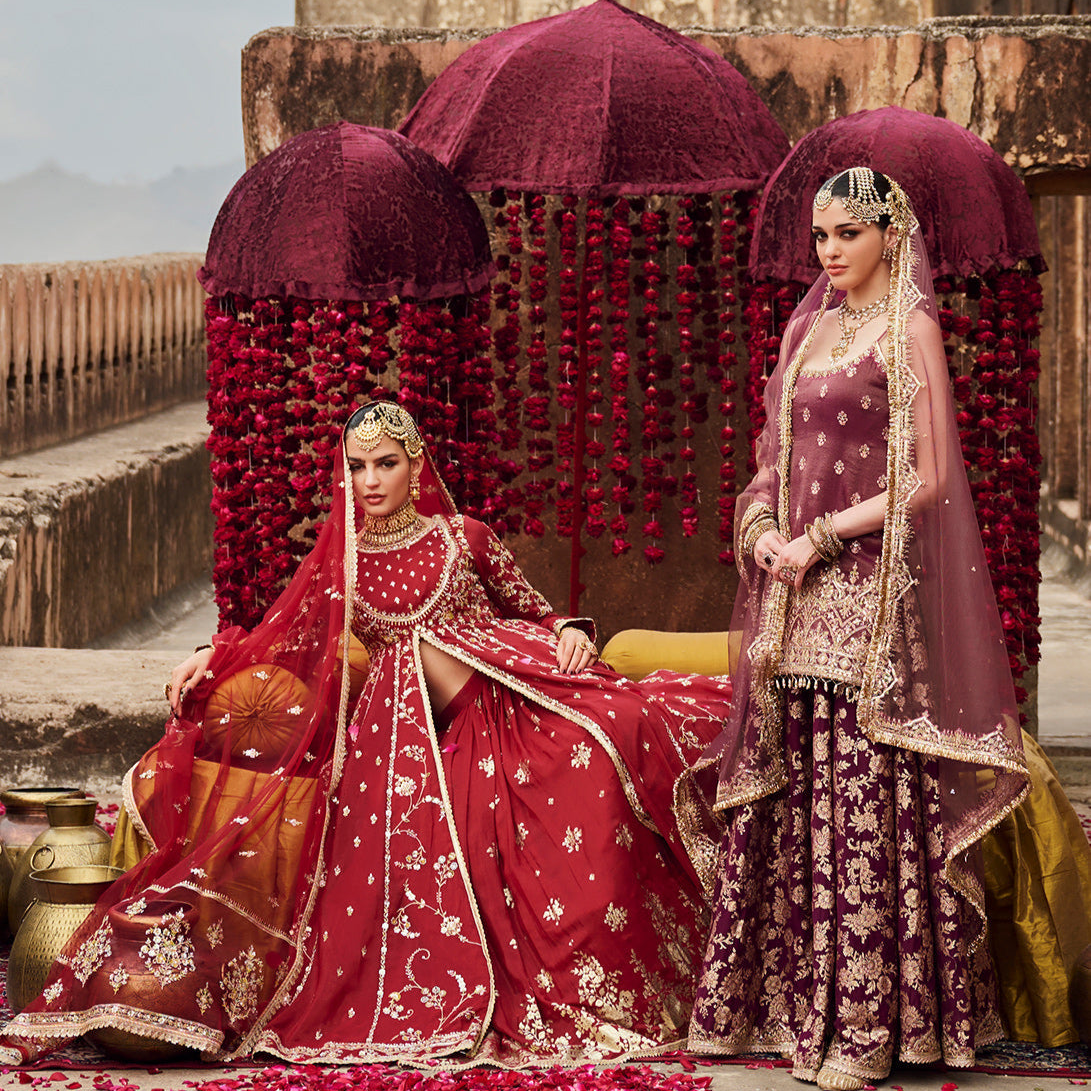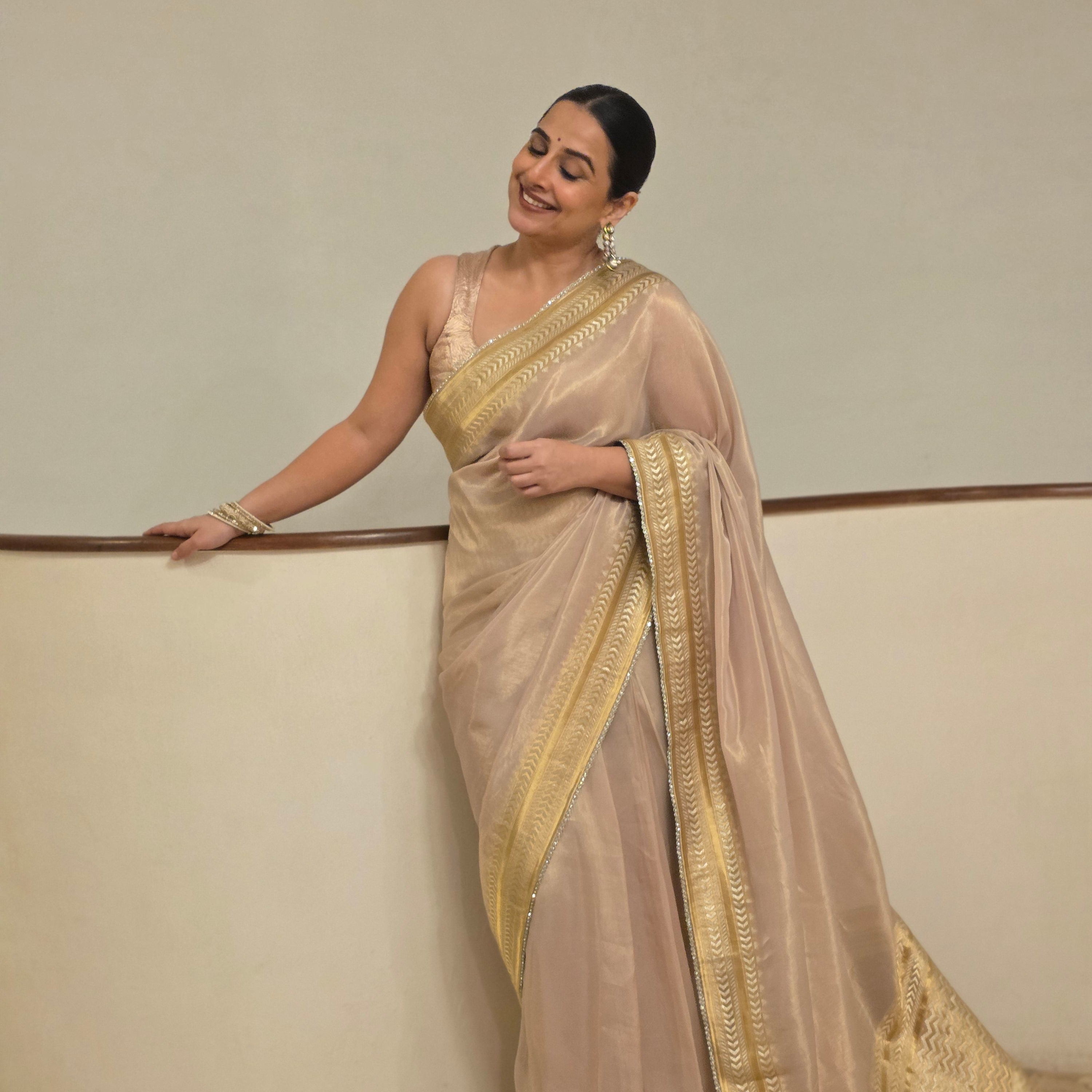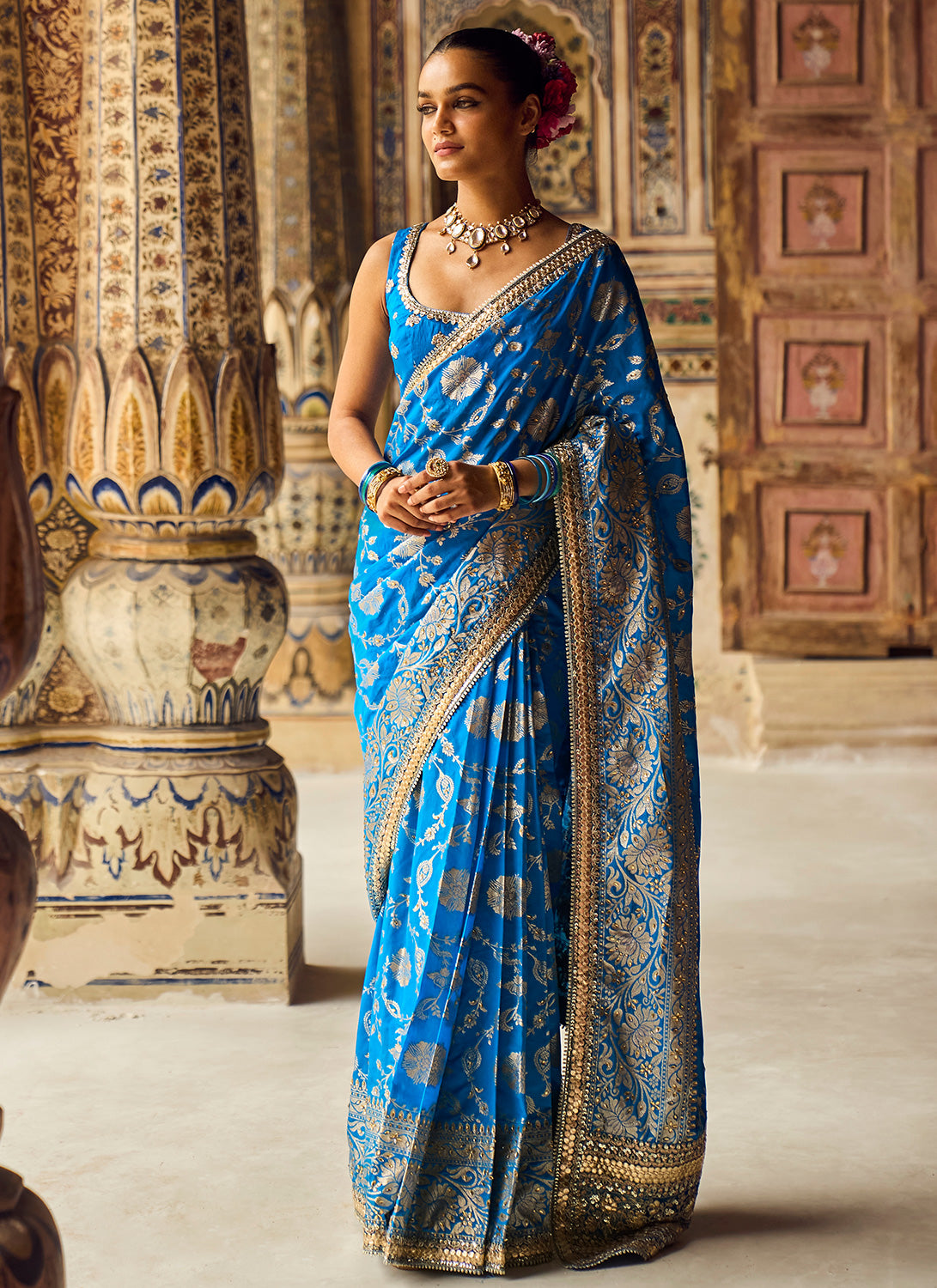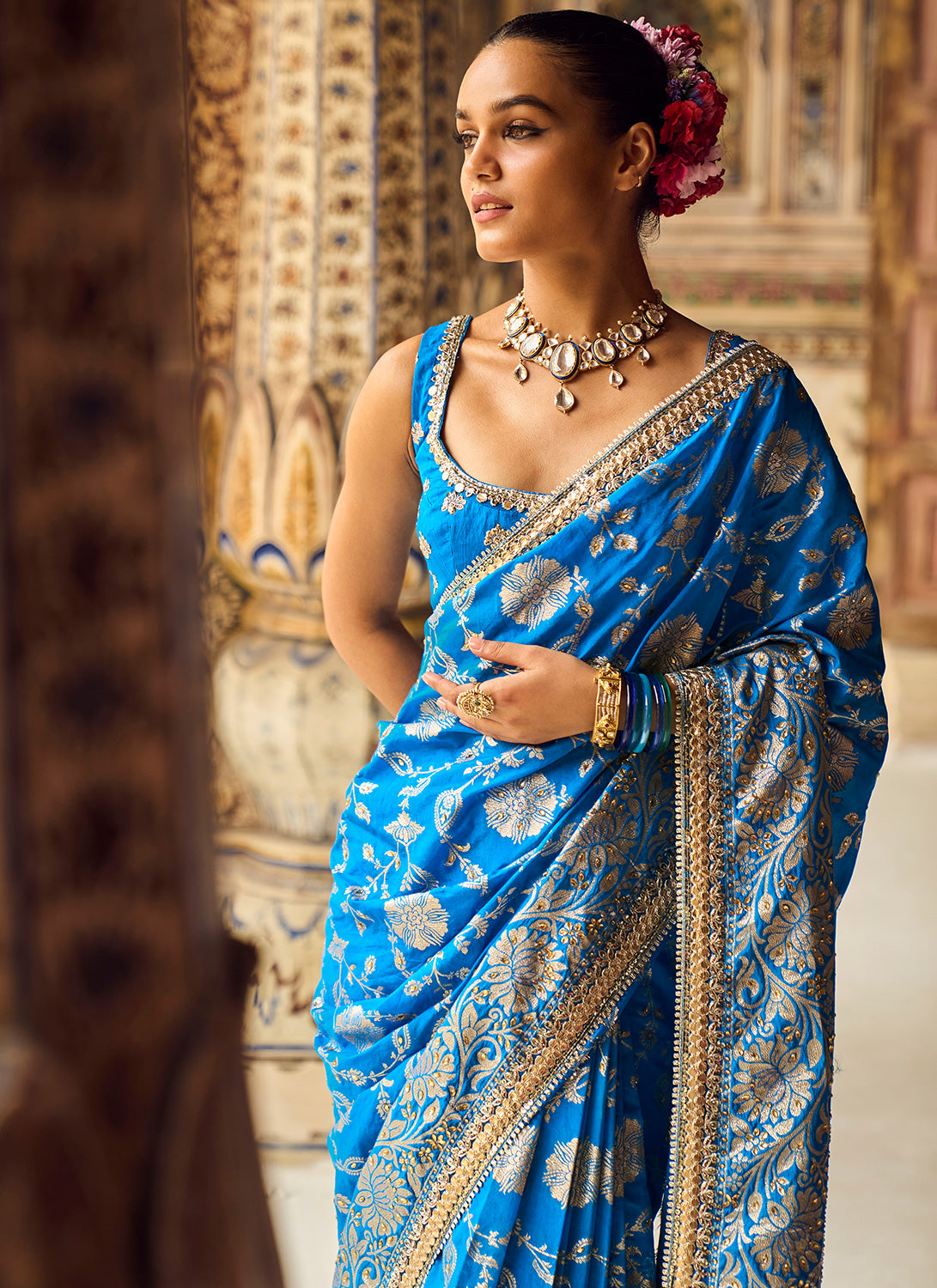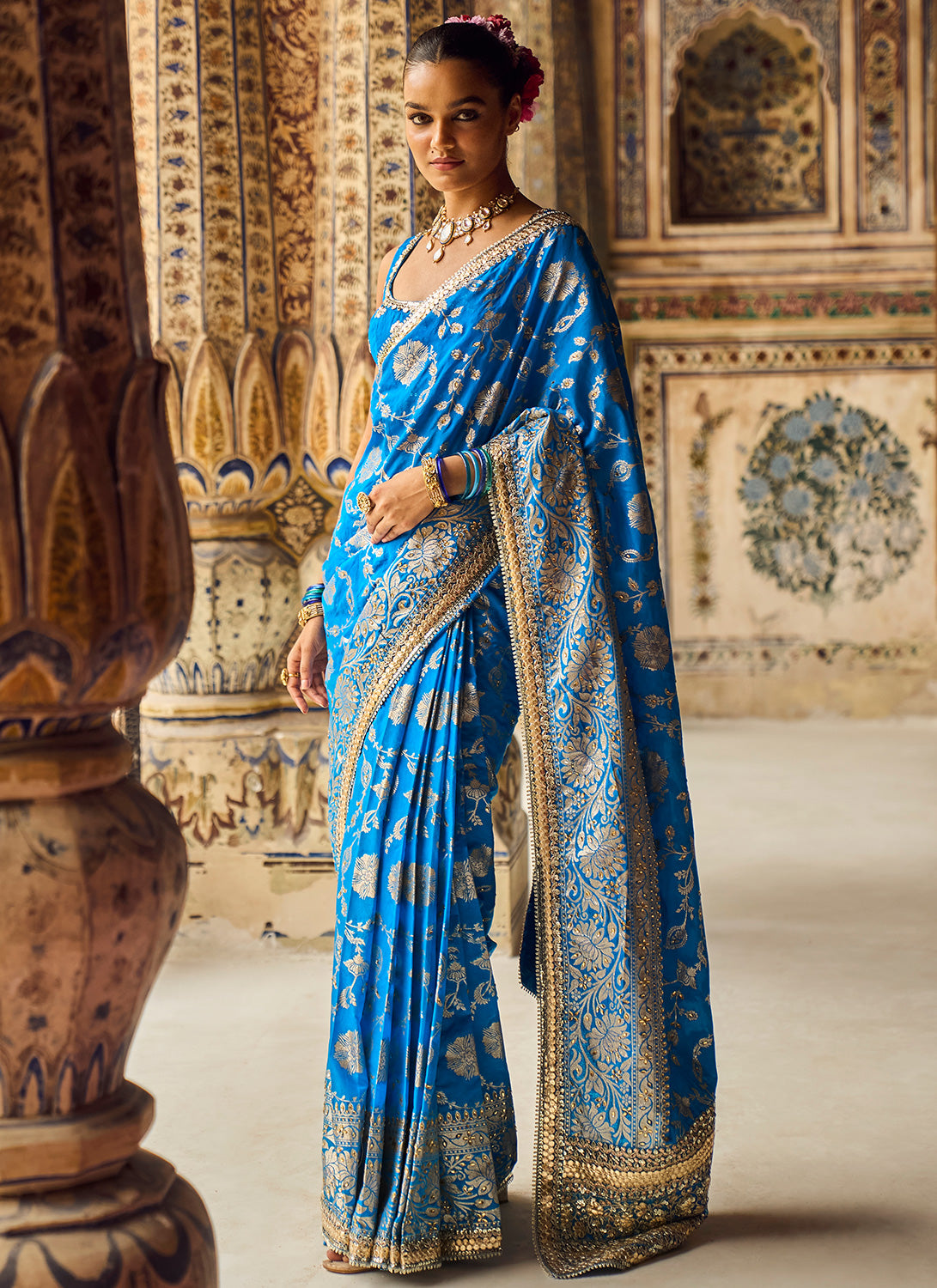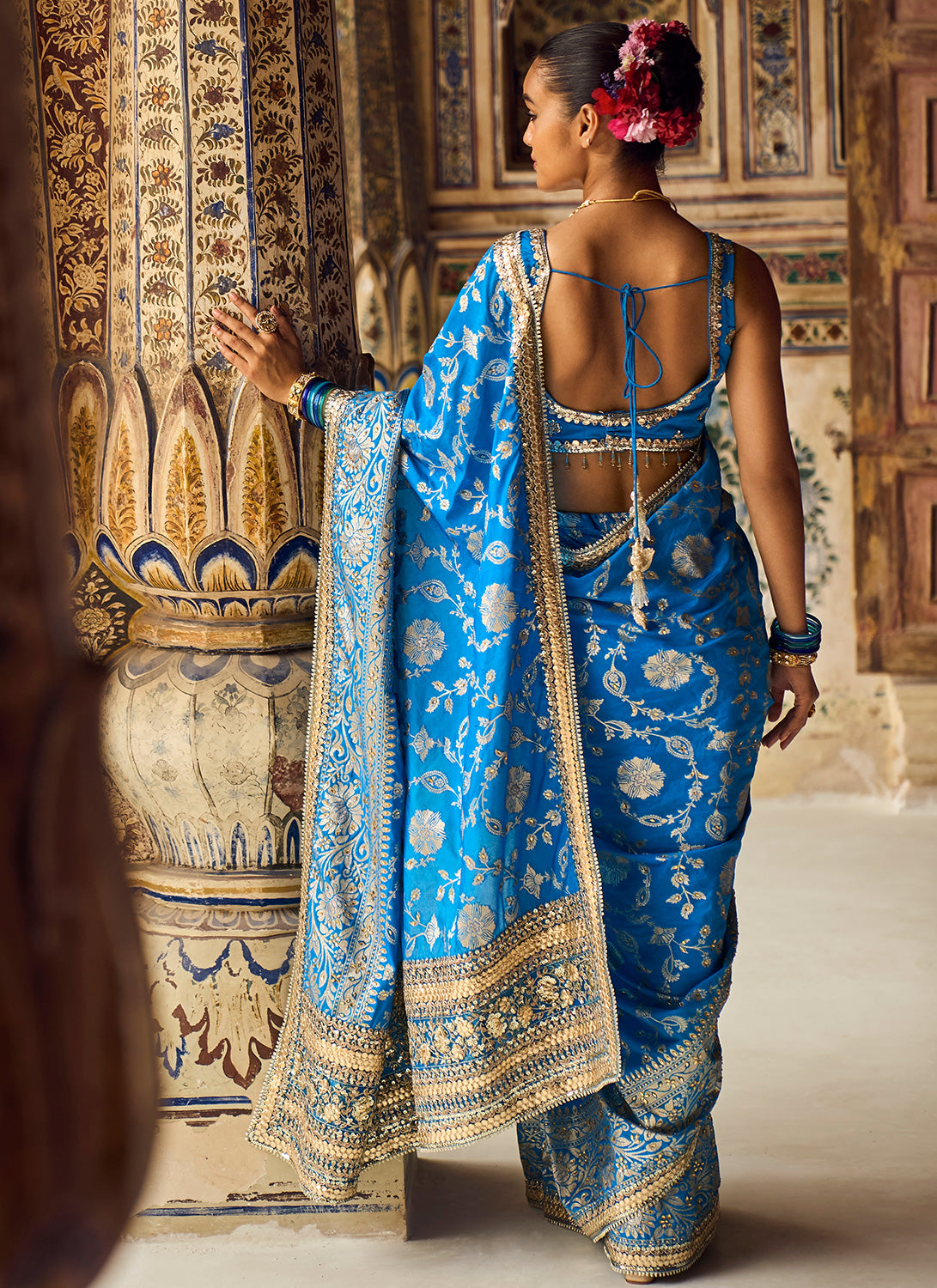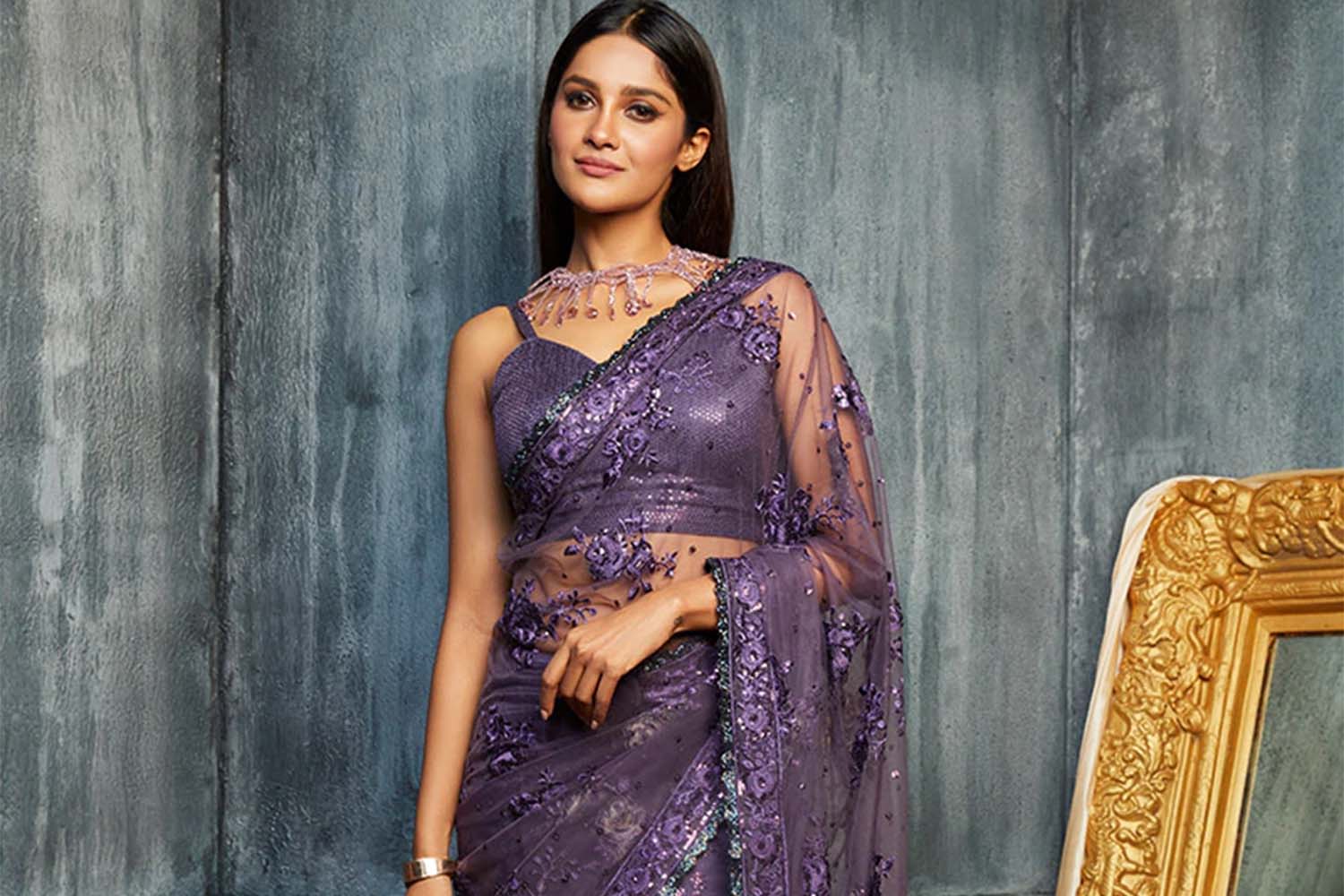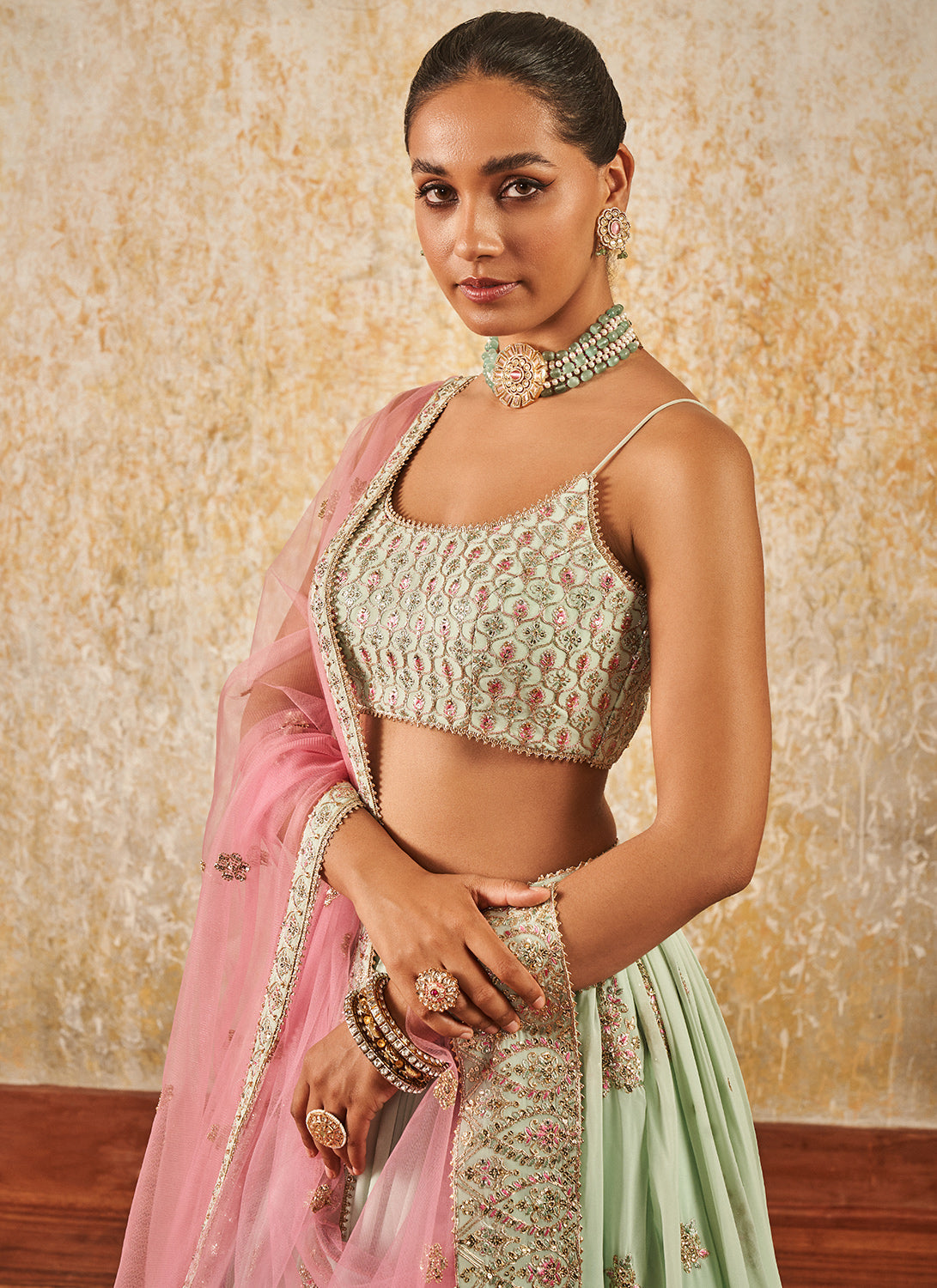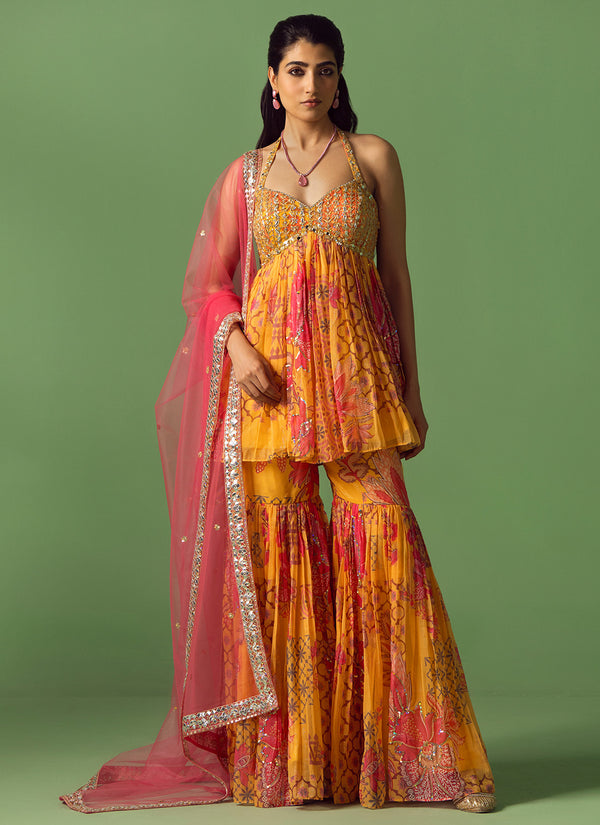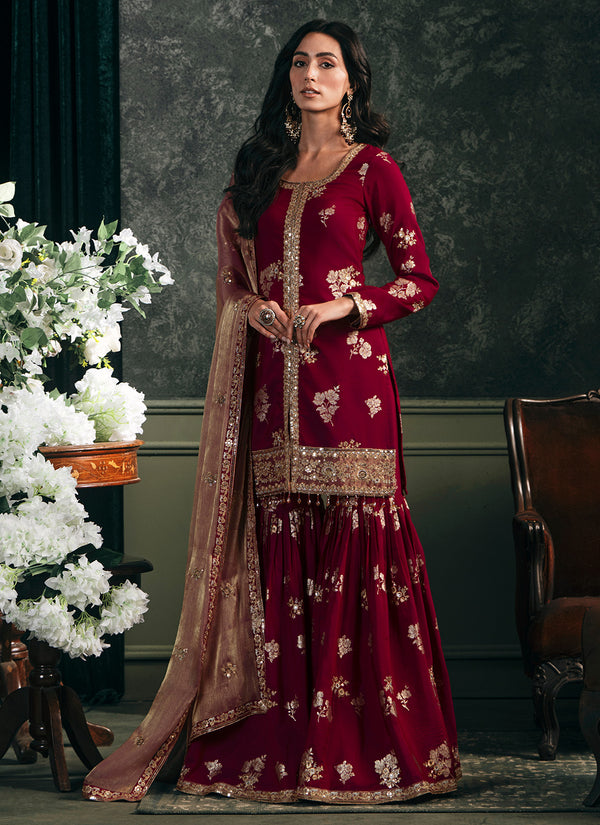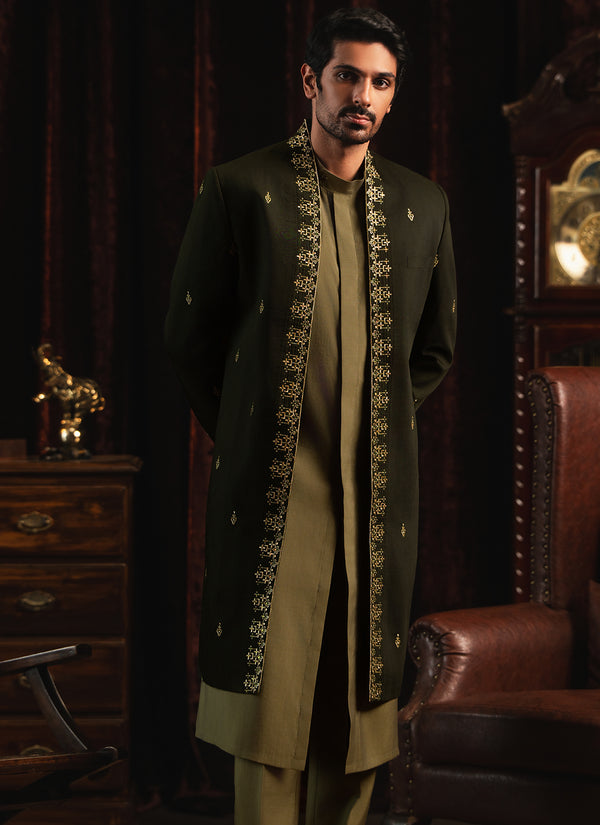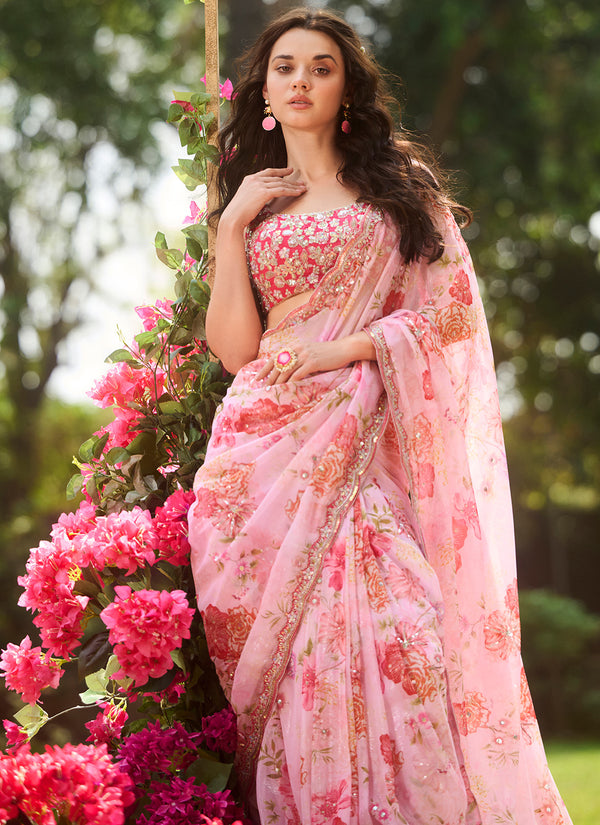
Saree Colors: Exploring The Meaning of Saree Colors
In South Asia, the saree is a powerful canvas of culture, symbolism, and personal expression. Worn across generations, regions, and religions, the saree speaks volumes through its color alone. From sacred ceremonies to high-glam events, the hues we choose aren’t arbitrary — they are deeply intertwined with emotion, seasonality, belief systems, and social significance.
Colors in Indian culture have long been considered a carrier of meaning. It’s woven into mythology, astrology, caste markers, and rituals. The saree, being the most iconic form of attire in the subcontinent, embodies this chromatic legacy, where red evokes matrimonial power, yellow channels divinity, and blue resonates with the divine personas of Lord Rama and Lord Krishna.
But in today’s world, these age-old associations also evolve into modern statements. As designers and fashion enthusiasts reinterpret tradition, saree colors have become not just a matter of custom but also a matter of individuality and style.
Here’s a closer look at what saree colors represent, how to choose them based on mood and occasion, and which Lashkaraa styles bring these colors to life.
How Fabric Affects Your Saree Color
Before we dive into color, let’s clarify that color doesn’t exist in a vacuum, and the fabric you choose plays a powerful role in how a saree color looks and feels. Vibrant hues and colors, like red, emerald, and navy blue, tend to pop more in velvet, brocade, or silk sarees. These textiles absorb dye richly and create depth that’s perfect for formal events, especially at night.
Lighter tones, such as peach, powder blue, and lemon yellow, shine beautifully on chiffon sarees, georgette, or organza sarees, where the sheerness of the fabric enhances the delicacy of the color, giving pastel shades an ethereal quality.
On the other hand, cotton sarees give muted shades like off-white, grey, or earth-toned green a grounded, natural feel. This is perfect for spiritual gatherings, temple visits, or cultural festivals where simplicity is part of the aesthetic.
When choosing the right saree, the fabric is just as important as the color. Together, they shape the emotion, energy, and impression of the entire look.
The Significance of Colors in Sarees
Every saree color carries its own emotional and symbolic weight. Whether rooted in ancient rituals or chosen for modern expression, the shades we wear often reflect our values, intentions, and the moments we’re celebrating. Let’s break it down!
Red Sarees: Bold, Regal, & Passionate
Red is perhaps the most iconic color in the South Asian wedding wardrobe. Symbolizing prosperity, love, fertility, and commitment, it has historically been the go-to hue for brides. Its energy is intense, commanding attention and reverence. Red sarees are typically worn during weddings, engagement ceremonies, Karva Chauth, and other festivals that celebrate marital bonds. They're also well-suited for winter functions, as the color’s warmth complements the season’s richness.
If you're looking to channel traditional elegance with a touch of opulence, a classic red saree with gold accents is an evergreen choice. Lashkaraa’s collection offers luxurious interpretations of this shade, including deep brick red, maroon, and
Our Red Embroidered Jacket Style Saree is a modern-day statement piece, blending the richness of bridal tradition with the edge of high fashion. The deep red base signifies prosperity, marital bliss, and strength, which are sentiments that have defined red’s place in ceremonies for centuries. However, what sets this style apart is the structured embroidered jacket, which replaces the typical blouse and adds an air of regality and sophistication. Think of it as heritage with a silhouette twist.
Pink Sarees: Romantic, Joyful, & Graceful

Pink sits beautifully between the intensity of red and the serenity of white, making it a versatile and beloved color for sarees among women of all ages and occasions. Often associated with tenderness, love, and feminine energy, pink sarees are a favorite for engagement parties, baby showers, and festive daytime gatherings.
Different shades of pink tell different stories. Blush and rose tones evoke a sense of softness and elegance. Hot pink and magenta bring boldness and youthful energy. Baby pink feels delicate and dreamy, perfect for summer weddings or haldi functions.
Lashkaraa’s pink sarees bring this palette to life with pastel chiffon sarees, dusty rose silks, and bright pink georgette adorned with mirror or threadwork. Whether paired with gold, ivory, or contrasting jewel tones, pink makes a statement that’s equal parts romantic and radiant.
Blue Sarees: Calm, Confident, & Royal

Blue, in its many hues, represents peace, wisdom, and resilience. Deeply rooted in Indian mythology and often associated with divine figures like Lord Krishna and Lord Rama, it’s a color that signifies depth and strength of character.
Lighter blues are ideal for spring and summer celebrations, thanks to their breezy, calming feel. Meanwhile, darker blues and teal tones work beautifully for evening party wear, family gatherings, or formal occasions.
Lashkaraa’s Teal Blue Embroidered Net Saree is a gorgeous choice. It offers a fashion-forward take on this tranquil color, perfect for cocktail functions or day weddings.
Green Sarees: Prosperous and Rejuvenating
Green is nature’s color, symbolizing freshness, new beginnings, fertility, and prosperity. It's often worn during spring festivals like Baisakhi, Gudi Padwa, or Eid, and holds significance in many regional and religious cultures. Brides-to-be, expectant mothers, or those attending mehendi functions often choose green for its refreshing and auspicious energy.
In warmer months, lighter or sea greens feel lively and vibrant, while emeralds and olives lend a timeless grace to evening looks.
A perfect pick for daytime ceremonies, the Lime Green Embroidered Net Saree exudes brightness and celebration. Its lightweight fabric and detailed work make it an effortless yet striking option for summer weddings or outdoor events.
Yellow Sarees: Joyful, Sacred, & Radiant

Cheerful and spiritually charged, yellow is a color that radiates warmth, positivity, and enlightenment. Closely associated with the goddess Saraswati, it's traditionally worn on Basant Panchami, during pujas, and for haldi functions in Indian weddings. Yellow is also seen during spring festivals and on days that mark new beginnings — often worn by those seeking blessings or celebrating milestones.
But the Light Yellow Embroidered Organza Saree takes this sacred hue and gives it an unexpectedly regal twist. Dusty yellow is a subtler, moodier take on the classic bright and brings a vintage softness to the overall look. It’s elegant and grounded, making it perfect for women who want to honor tradition with a touch of modern grace.
While mustard and marigold shades add richness to evening functions, pale lemon or sunflower yellows bring an airy joy to daytime occasions. Pairing beautifully with floral jewelry or gold accessories, a yellow saree can be both playful and spiritual. Lashkaraa’s yellow styles capture this spectrum with graceful detail and sunlit charm.
Purple Sarees: Mystical, Regal, and Spiritual

A color historically associated with royalty and the divine, purple evokes creativity, mysticism, and self-assurance. It’s a fusion of the calmness of blue and the intensity of red, making it a powerful and balanced shade. In Indian fashion, purple sarees are often chosen for formal evening events, Diwali parties, or wedding receptions, especially when you want a look that feels grand without being over-the-top.
Lashkaraa’s Dusty Purple Embroidered Saree is a stunning representation of this color’s richness, combining traditional brocade with intricate embroidery craftsmanship. It’s a perfect pick for those who want to exude elegance at the next special occasion.
Pastel Sarees: Soft, Modern, and Dreamlike

Pastel sarees have become a quiet revolution. These soft hues — think mint green, lavender, powder blue, peach, and ivory — offer a contemporary take on traditional attire. Pastels are especially beloved for spring and summer wedding sarees, daytime pujas, or any occasion that calls for subtle sophistication.
What makes pastel sarees so captivating is their ability to blend tradition with a minimalist aesthetic. On light, airy fabrics like chiffon, organza, or crepe, pastels feel effortlessly graceful. And when paired with delicate embroidery or tonal embellishments, they offer a whisper of opulence without overpowering the wearer.
From blush net sarees with floral motifs to lilac styles accented with silver threadwork, these hues are ideal for women who prefer elegance with an understated edge.
Black Sarees: Elegant, Powerful, and Reclaimed

Although traditionally considered inauspicious for religious ceremonies, black has been reclaimed as a color of strength, elegance, and modernity in the fashion world. In contemporary ethnic fashion, black sarees have become a symbol of empowerment, worn to cocktail nights, receptions, and formal gatherings. It’s the ultimate evening color, effortlessly slimming, sophisticated, and bold.
And no piece captures this transformation quite like our Black Embroidered Net Saree. This saree is a celebration of contrast — dark yet delicate, dramatic yet refined. The sheer net fabric creates a light, ethereal silhouette that moves with ease, while the intricate embroidery lends a grounded sense of artistry. Together, they make black feel less like a taboo and more like a power move.
Whether you're going for an all-black embroidered look or pairing it with shimmering silver or gold accents, black is a confident choice.
Motifs and Embellishments: Bringing Saree Colors to Life

The magic of a saree often lies in its details, and motifs and embellishments are where storytelling comes to life. From gold zari work on a red bridal saree or silver sequins glinting across white sarees, embellishments enhance the emotion a color evokes.
Traditional motifs, like paisleys, florals, peacocks, and mandalas, often carry spiritual or cultural significance. When embroidered in contrast or metallic threads, they create movement and dimension. Mirror work pairs beautifully with yellow and green sarees during mehendi or Garba nights, while stone and sequin embroidery elevate jewel tones like sapphire, wine, and emerald.
Brocade sarees utilize woven patterns to add richness, while minimalist thread embroidery on pastel georgette sarees introduces a clean, modern flair.
Using Color to Express Yourself with a Saree
In indian culture, color is never just decorative — it’s deeply emotional, spiritual, and symbolic. A saree’s shade can reflect your mood, mark your life stage, or make a personal statement. Whether you're dressing for devotion, celebration, remembrance, or simply expression, there’s a color waiting to embody your intention.
Lashkaraa’s saree collection captures this colorful essence beautifully. Each piece not only tells a story rooted in tradition but also allows for reinterpretation through modern design. So next time you reach for a saree, don’t just pick a color. Choose a feeling, a memory, a meaning. Because in the world of sarees, your shade is your signature.

